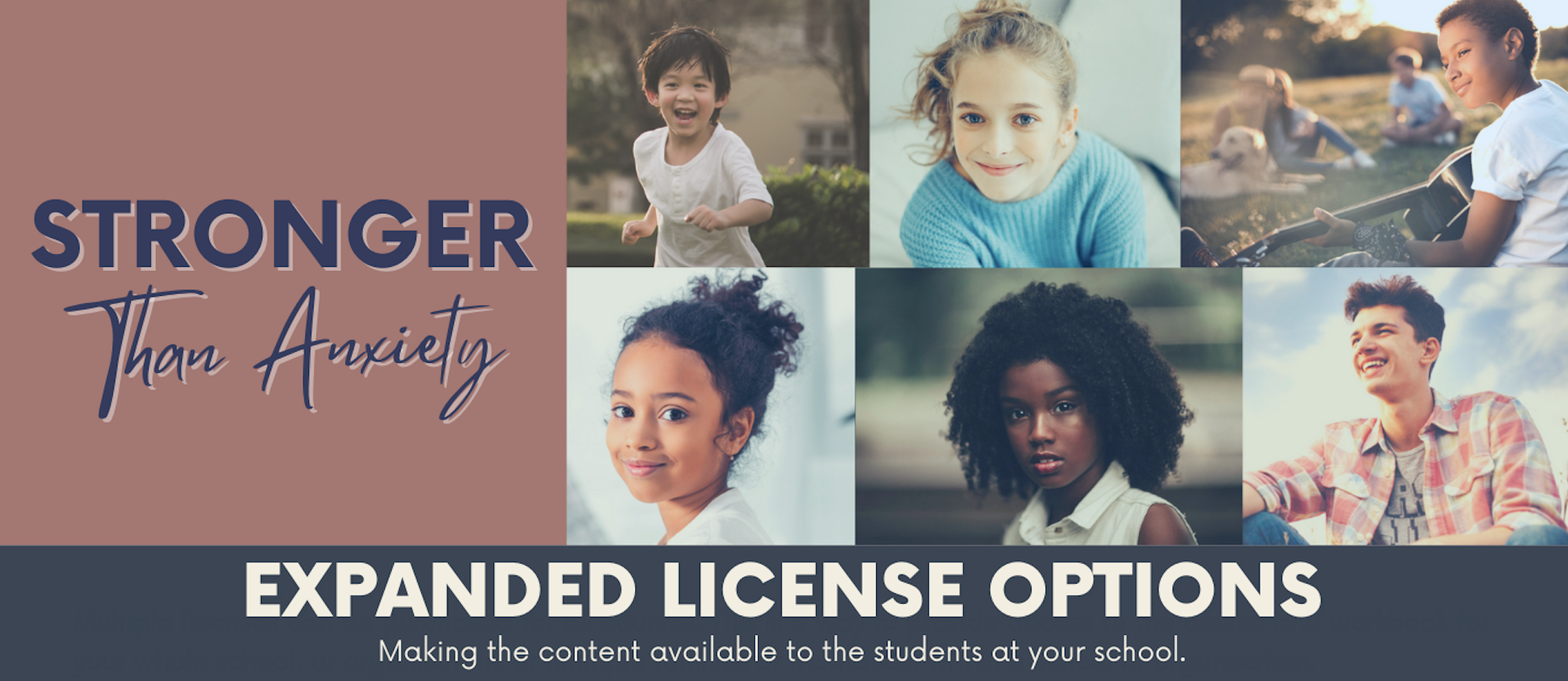
The purchase of ‘Stronger Than Anxiety’ provides a personal license for individual use only. If you would like to have the content made available to children and teens in your school or organisation, we can certainly make that happen. Depending on your specific needs, there are two options:
Option 1: A Broadcast License
To access the content from within your school or organisation, any time.
Who is a broadcast license best for?
A broadcast licence is best for schools, organisations, or clinicians (such as psychologists, counsellors, school counsellors, therapists) who would like to make the content available to all young people within their school or organisation, or with individual students or clients as part of their sessions. A broadcast license is for viewing and access on your premises exclusively.
Is there a limit on the number of people who can access the content?
There’s no limit at all, as long as they are enrolled in your school or organisation and watch the material on your premises.
Does our whole school need to watch it at the same time? I mean, we like each other but sometimes we like to do our own thing.
You certainly don’t need to watch it all together. The content will be available for 4 months, so individuals, groups, classes, or year levels can view the material at their own pace, as many times as they want.
If our students would like to watch the content from home, say, with a parent or carer, will the broadcast license include this?
No, a broadcast license allows you to make the content available to anyone within your organisation, but the content must be accessed from within your school or organisation. If you would like to make the content viewable outside your school or organisation for the young people enrolled with you, we have another option that would be perfect. Take a look at the multiple license option (Option 2) below. This will be the one for you.
How long can the content be accessed for?
The content will be accessible for 4 months from when your license is activated. During that time, the content can be accessed as many times as you like, provided it is viewed on your premises.
Can each student have their own workbook?
Yes, absolutely. The license provides for you to download the workbook and copy it as many times as you need for the children or teens in your school or organisation.
Okay. This is the one. How do we purchase a broadcast license?
- First, we’ll need some details from you. Please email with:
- the name of your school or organisation;
- a billing email;
- the number of students in your school or organisation.
- We will then issue an invoice and when payment is made, we’ll send through access details.
What does a broadcast license include?
Each license will provide access to:
- ‘Stronger Than Anxiety’ course video (42 minutes).
- ‘Calming Your Amygdala’ downloadable workbook. Once this has been downloaded, you can copy this as many times as needed for each student viewing the course to have their own individual copy.
Let’s talk cost. How much?
The cost for a broadcast license is AUD $2000.
Okay. This is the one. How do I purchase a broadcast license?
- First, we’ll need some details from you. Please email with:
- the name of your school or organisation;
- a billing email;
- the number of students in your school or organisation.
- We will then issue an invoice and when payment is made, we’ll send through access details.
Option 2: Multiple License Bundle
To access the content from anywhere, any time.
Who is this best for?
This option is best if you would like the content available to individual students or families from your school or organisation, for access outside your premises. This option will allow children, teens, or their immediate families to access the material from home. This will make way for parents to view the content alongside their children or teens and have meaningful conversations within the family about courage and resilience, and ways through anxiety.
How is this different to the broadcast license?
The broadcast license is for one license that allows you to show it to the people within your school or organisation, from within your premises only. Multiple licenses are separate licenses that allow the course to be accessed by individual children, teens, or families from within their own homes. A broadcast license allows the content to be accessed from one location, whereas multiple licenses allow the content to be accessed from multiple separate locations, and by different families.
How long will the course content be accessible for?
The course content will be available for 3 months from the date of activation of a license. For example, if you purchase a bundle of 25 licenses, each license will allow for three months of access from the date of activation of that particular license.
What’s included?
Each license includes:
- ‘Stronger Than Anxiety’ video (42-minutes).
- ‘Calming Your Amygdala’ downloadable workbook.
Is there a discount if I purchase multiple licenses?
Of course! The discount will depend on the number of licences you purchase. The more licenses, the higher the discount:
- 10-25 licenses – 30% discount
- To calculate: [number of licenses] x [cost of course] x 0.7 = what you pay
- 26-50 licenses – 40% discount
- To calculate: [number of licenses] x [cost of course] x 0.6 = what you pay
- 51-100 licenses – 50% discount
- To calculate: [number of licenses] x [cost of course] x 0.5 = what you pay
- 101-200 licenses – 60% discount.
- To calculate: [number of licenses] x [cost of course] x 0.4 = what you pay.
- More than 200 licenses – Please get in touch.
How can I purchase multiple licenses, and how does the process work from there?
- First, we will need a few details from you. Please email with:
- the name of your school or organisation;
- a billing email address;
- the number of individual licenses you would like to purchase.
- We will then issue an invoice, and when payment is made, access will be provided in one of two ways (you choose):
- Option 1:
- We will provide one code that will be valid for as many uses as the number of licenses purchased.
- You can then share this code with as many families in your school or organisation as you have purchased licenses for. The code will provide each family or individual with a 100% discount for the purchase of the course.
- The code will be valid for as many uses as the number of licenses as you have purchased. For example, if you purchase 25 licenses, the code can be used 25 times for a 100% discount each time.
- When the course is purchased (with the 100% discount code), this will provide access to the course content will be provided for 3 months.
- Option 2:
- We will provide different codes, for as many licenses as you have purchased. For example, if you purchase 25 licenses, we will provide you with 25 different codes. Each of those 25 codes can be used once for a 100% discount off the purchase price.
- A code can then be provided to each child or family a license has been purchased for.
- When the course is purchased (with the 100% discount code), this will provide access to the course content for 3 months.
- Option 1:
To order or for more information.
If you have any questions at all or if you would like to order, please get in touch at .
For a downloadable information sheet, please click on the link below.

